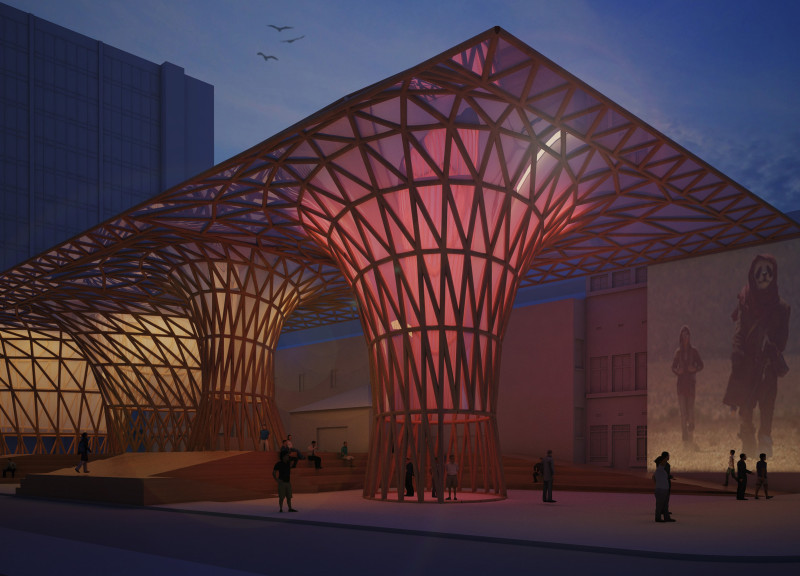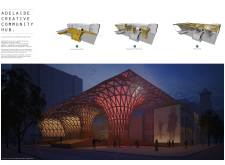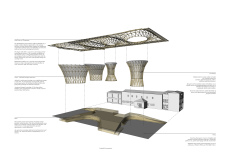5 key facts about this project
The primary function of the building is [insert function], serving as a pivotal hub for its surroundings. This project is designed to accommodate a variety of activities, ensuring versatility and adaptability in its use. The layout promotes an intuitive flow, guiding occupants naturally through the different spaces while encouraging interaction and engagement. The architectural design encapsulates the idea of welcoming and accessibility, allowing for an inclusive atmosphere that serves a diverse demographic.
Important aspects of the project include its architectural elements, which are meticulously crafted. The facade showcases a harmonious blend of materials, such as a combination of concrete, glass, and sustainably sourced wood. The use of glass is particularly noteworthy, as it not only facilitates natural light penetration but also establishes visual transparency, connecting the interior with the exterior landscape. The strategic placement of windows enhances the building's energy efficiency while providing stunning views of the surroundings. Additionally, the careful attention to the texture and color of materials reinforces the project’s alignment with local architectural traditions, creating a cohesive narrative that honors its context.
The roof structure further contributes to the overall design, often serving an aesthetic purpose while also providing functional benefits. Features such as green roofing or overhangs can be observed, offering both environmental advantages and physical comfort within the space. This aspect exemplifies how contemporary architecture can address sustainability while enhancing the user experience.
Landscaping plays a crucial role in complementing the architecture of the building. The integration of outdoor spaces, such as terraces or communal gardens, not only enhances the property’s visual appeal but also provides essential outdoor areas for users. This design approach acknowledges the importance of nature in urban settings and promotes a lifestyle that values outdoor engagement.
Unique design approaches are evident throughout the project, showcasing an understanding of current architectural trends while remaining grounded in practical application. The inclusion of technological features, such as energy-efficient systems, smart building technologies, and sustainable practices, reflects a commitment to reducing environmental impact. This forward-thinking mindset ensures that the architecture is not only relevant today but also prepared for the future.
The incorporation of community-focused spaces, designed to foster social interaction, is a standout element. Whether through open-plan areas, shared facilities, or flexible meeting spaces, the design encourages users to gather, collaborate, and participate in communal activities. This sense of shared ownership is critical in fostering a vibrant, engaged community.
In summary, this architectural project exemplifies a well-rounded approach to design, effectively balancing aesthetic concerns with practical functionality. The careful selection of materials, thoughtful layout, and integration of technology and community spaces demonstrate the potential of modern architecture to create meaningful environments. For those interested in a comprehensive view of the project, exploring the architectural plans, architectural sections, and architectural designs will reveal further insights into its thoughtful execution and design ideas.


























